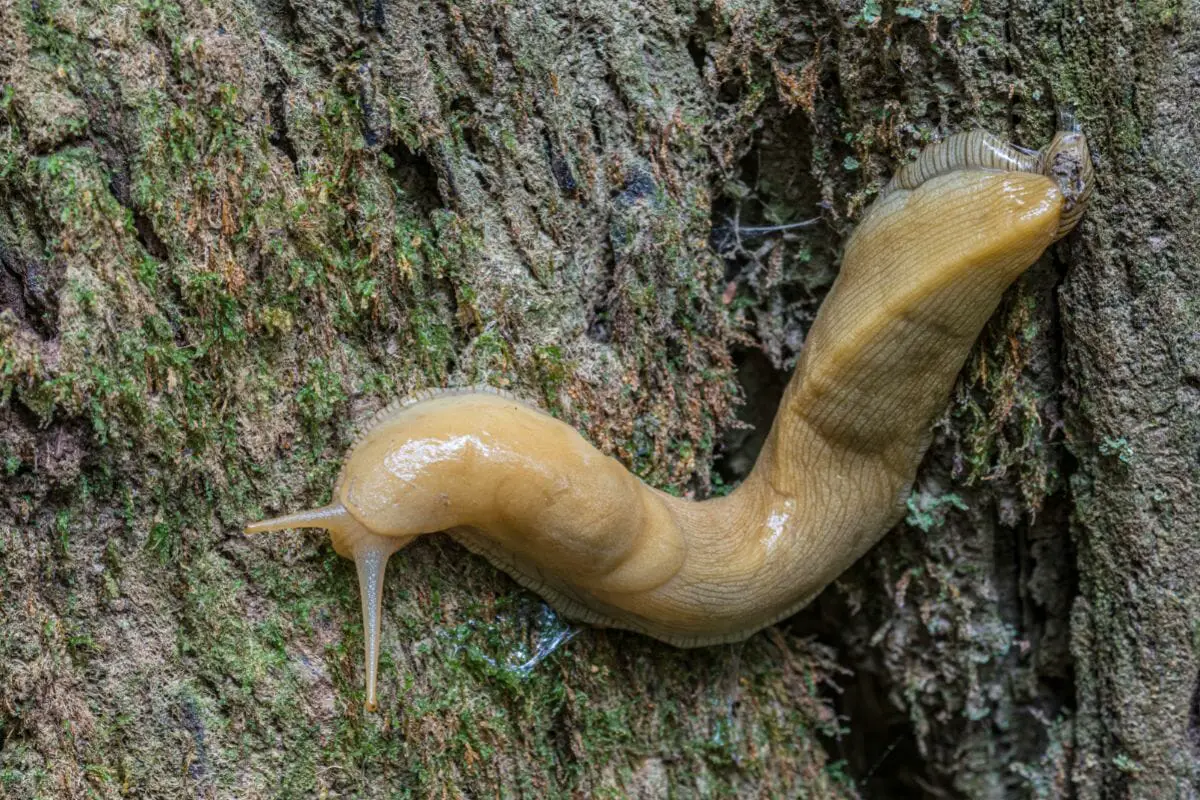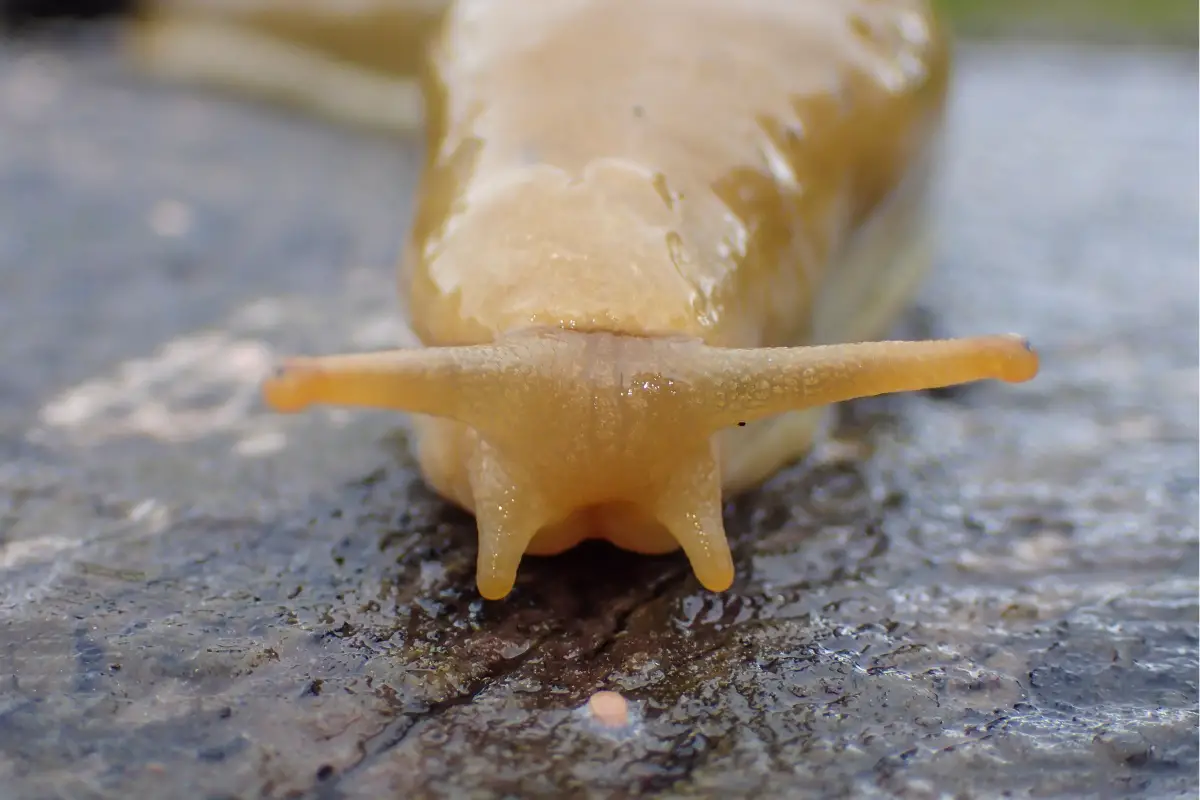Even the phrase “slug” can cause gardeners’ faces to twitch and contort uncomfortably. There are many different kinds of slugs in gardens, but one particular gastropod mollusk has completely destroyed gardens, bringing men and women to tears.

No matter if it’s fruits and vegetables like brassicas. Or even your lovely houseplants, like hostas. They are all the animals’ favourites. Everything you may possibly ought to learn about slugs will be covered in this article.
You will be capable of recognizing the majority of the species you will encounter in your gardens after reading this article and learning more about them. Then, you will have a far greater understanding of your slug situation.
The Anatomy Of A Slug
Slug anatomies can be divided into a number of parts.
Foot
This is the slug’s bottom portion. The slug moves by contracting a muscle, and so this muscle contracts periodically to provide motion.
The slug leaves a coating of mucus behind as it goes, which it slides over. The slug is shielded from the things it is traveling over as a result.
The common eggshell slug deterrent used by gardeners frequently fails for this precise reason.
Tentacles
On their heads, slugs have two sets of tentacles. If somehow the slug is in danger, they both can be retracted. They use the lower pair for smell, and the upper pair for light detection.
Mantle
There is a mantle directly behind the skull. an elevated region of the back that resembles a horse’s saddle. When opened, this mantle, which often has the respiratory aperture on the right of the slug, is very simple to recognise.
The anal and genital areas are located below the mantle.
Radula
This is a system of microscopic teeth for use by mollusks for eating that is used to scrape particles of food off surfaces and bring them through into the mouth.
Skirt
The foot’s bottom fringe.
Tail
The term “tail” refers to everything behind the mantle.
Although this is only a very basic explanation of the slug’s anatomy, it will aid you in understanding some parts of this article as we go on.
Varieties Of Slugs
Slugs come in a wide variety of kinds and subspecies. Approximately 60,000 distinct species exist. Too many for us to cover here. I’ll discuss some of the species that are most frequently observed in your backyard garden in this part.
Limax Maximus – The Leopard Slug

The biggest slug is what the Latin word Limas Maximus literally means. The genus contains a small number of species, including the leopard slug as well as the giant grey slug. It belongs to the Limacidae family of slugs.
Leopard slugs can grow up to 16 cm, or 6.3 inches, in length. It gets its name because it has upper body patterns resembling those of a leopard. This slug has a white underside to its foot.
The slug has a lengthy keel that extends the entire length of the back (Tail section). This slug produces sticky mucus, and while dangling from this mucus, you may observe its very distinct breeding habits.
They are very common and can be found everywhere. In most of the woodlands and gardens in Europe, Africa, Asia, and the USA, they choose to reside. Leopard slugs are sometimes beneficial to gardeners.
They will occasionally consume other slugs but prefer to eat decaying plants and fungi. Leopard slugs, in contrast to many other slugs, have a lifespan of up to two years if they make it through the first winter.
Arion Ater – The Black Slug

A widely common slug with a big, hefty body. Despite its name, this slug can grow to a length of 18 cm (7 inches) and could be black-brown, gray, or even red in appearance. Its back and sides are covered in huge tubercles.
It is a highly widespread slug that can be found in Australia, Alaska, Spain, the Pacific Northwest, and Europe. Additionally, this slug has been brought to a number of locations, including British Columbia.
They are found in woodlands, hedgerows, and grasslands.
Limax Cinereoniger – Ashy Grey Slug

It is the biggest slug in the UK. It can grow to be an astonishing 25 cm long. This slug has an ash-grey coloured back with a pale yellow keel. Despite living all over the UK, this slug is rarely seen by gardeners because it prefers mature woodlands.
Arion Subfuscus – The Dusky Slug

This slug matures to a size of 7 cm, and it may be found all throughout the UK. It is a light brown tint with dark stripes, however because of its mucus, it may appear to be more orange in hue.
Although it can be spotted in gardens and allotments, it prefers to live in hedgerows and woodlands. You can observe this slug gorge itself on your brassicas and lettuce.
Deroceras Reticulatum – Gray Field Slug (Netted)

This poses one of the biggest risks to the majority of gardeners because it is common and dwells in yards and allotments. It will consume all of the greenery you grow outside. This slug is light brown in color.
Its body has a lumpy appearance, and its bottom is clearly visible. Extremely enormous amounts of the clear mucus are generated. Since this slug, which is just 3 to 5 cm long, can continue to eat in sub freezing conditions, it is active in the early spring.
Limax flavus – The Yellow Slug

Certainly true to its name, this slug. It is golden in hue and adores moist environments. Whether it be your home or garden. Despite being regarded as a nuisance species, this slug is an excellent recycler of rotting material.
It measures around 10 cm in length and has skin that is speckled with yellow and grey. It is always present and feeds on living as well as dead plants and fungus. So the gardener should keep an eye out for this slug.
Final Thoughts
We now have a better grasp of the most common slugs you can see in your yard, house, and local area. Slugs can be eaten by birds, bugs, slowworms, earthworms, and hedgehogs.
Our gardens are delicate balancing acts; by irradiating one of them, the scales are tipped.
Slugs in the yard are therefore beneficial. They can aid in the decomposition of organic materials and will even consume carrion, cat, and dog feces.
- What Should I Do If A Koala Bites Me? Safety Guide - 2024-05-30
- Are Kangaroos Born Without Hind Legs? A Fascinating Journey - 2024-05-30
- Animals That Look Like Squirrels - 2024-05-30








